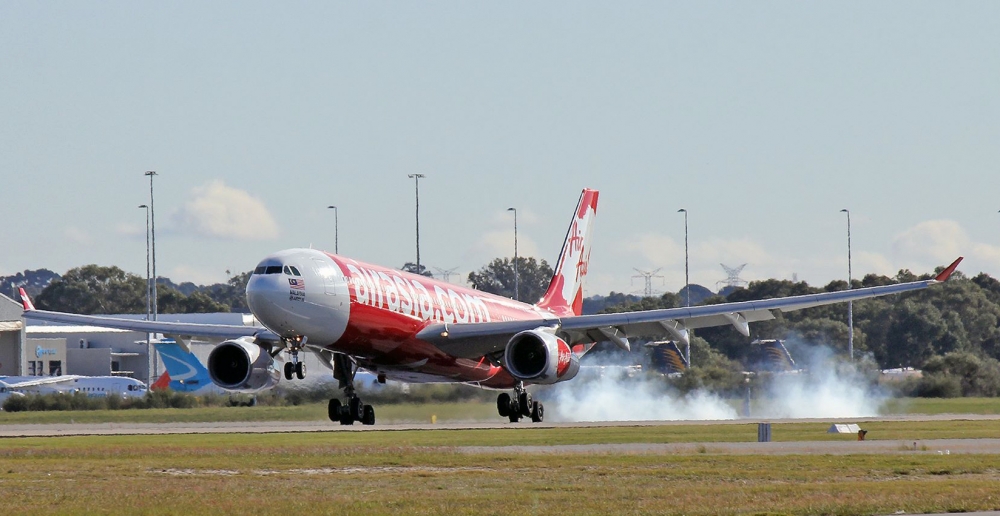The AirAsia X aircraft that suffered an engine failure on Sunday could have lost the entire engine and ripped out fuel lines, a former Airbus A330 check and training captain has warned.
The warning by the 40-year flying veteran came as the Australian Transport Safety Bureau yesterday classified the failure as a serious incident and AirAsia X defended its safety reputation.
AirAsia X plane shaking like a washing machine
“When an engine has severe vibrations it must be shut down immediately as the damage that can be inflicted is immense,” the former training captain said.
“The engine can detach from the wing, which could be catastrophic.”
“Fuel lines (could be) ripped open and electrics severely damaged or degraded.”
“It must be treated like an engine fire.”
“And if after shutdown it is free-wheeling with a missing blade and the severe vibrations continue you must divert to the nearest suitable airport,” the veteran pilot said.
AirAsia X has released few details of the incident which AirlineRatings.com understands involves the failure of a fan blade in the number one engine.
Hydraulic components and an oil pump were also severely damaged by the vibration.
The ATSB is liaising with engine manufacturer Rolls-Royce about the failure and said it expected to produce a report in “a couple of months” after interviewing personnel and gathering additional information.
“During the cruise, the flight crew detected moderate airframe vibrations and the number one engine failed,’ it said in a brief summary. “The aircraft was unable to maintain altitude and the crew conducted a return to Perth.”
Why the aircraft continued shaking and why the aircraft did not divert to nearby Learmonth when the incident occurred near Carnarvon at 8.16 am on Sunday will be matters which will be investigated following the incident .
An engine expert said it was possible an out-of-balance fan could windmill after the engine was shut down and still cause a low-frequency vibration.
He said it was “a pretty massive failure” and would only happen for two reasons: a manufacturing flaw or a lack of quality inspection during maintenance.
AirAsia X did not answer questions but issued a statement defending its safety record and saying it is cooperating with Rolls-Royce as well as local safety authorities. It also pointed out Malaysia-based AirAsia X had undergone Global safety audits run by the International Air Transport Association in 2015 and 2016.
“We would like to stress that AirAsia Group has always strictly followed the maintenance program prescribed by our manufacturers,’’ it said.
“We have also complied with all regulations and requirements as set forth by every country where the airline operates, including Australia
“In Australia, AirAsia Group has regularly passed safety and security audits conducted by the local aviation authorities.”
A source said the pilots were first alerted to the problem by an aircraft monitoring system and then heard and felt the vibration from the stricken engine. They opened the appropriate checklist to shut the engine down, did an 180-degree turn and returned to Perth.
Australia’s crash watchdog will investigate why the pilots of the A330 did not divert to Learmonth, just 25 minutes away, rather than fly the 90 minutes back to Perth.
The pilots were offered Learmonth but it was declined. It is understood they considered Geraldton, which is not rated for the A330, but decided the runway was too short.
The loss of one engine on a twin-engine aircraft requires the crew to divert to the nearest suitable airport but the term “suitable” leaves room for pilot discretion on safety grounds.
























